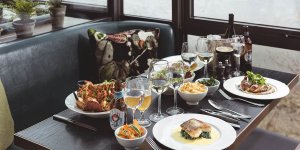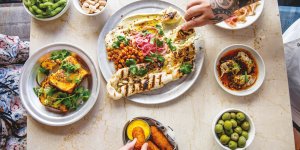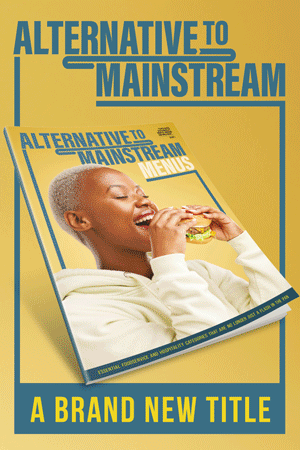Feature: Blazing the trail

In Dine Out editor Genna Ash-Brown’s recent meeting with Chotto Matte founder and owner Kurt Zdesar, the pair discussed the brand’s burgeoning global success and explored that mystical space where hospitality and creativity collide
A visit to Chotto Matte is a sensory experience. Every carefully curated detail you’ll find within this stunning restaurant portfolio is working towards the same goal: to send guests on an other-worldly culinary journey from Japan to Peru through incredible culinary evolution, atmospheric soundscapes and a textural feast of colour and design.
“We really go all out on that side of things,” says Kurt Zdesar, who founded the Nikkei restaurant alongside his business partner William Noble in 2013. “In the UK, it’s kind of expected and normal to see beautiful detail, like the shaped wood and handmade tables. Everything is bespoke, from the tiles to the crafted lava stone. Everything’s made for us to fit into our scheme. They just don’t do that in America.” Having launched in South Beach, Miami, in 2018 and more recently in San Francisco (October 2023), Zdesar is well placed to comment on how hospitality in the UK contrasts with business across the pond. “A lot of it’s off the shelf. Over there, you go to a shop and say “That cabinet” or “That chair” and it’s plastic that looks like leather. It’s just so nasty and cheap. We go into a lot of restaurants that are so well perceived and, while it’s certainly not all, I would say that 90% are put together very poorly. They’re badly built or badly designed – badly executed if you like. But you know, for those concepts, it’s solely the food that tends to win the customers over.”
Against the grain
For Zdesar, aesthetics are in no way an afterthought. He views the restaurant interior as a canvas, a creative vehicle that is inherently intertwined, yet pretty much on par, with the menu as the ‘main event’. From the illuminated statement bar in the Marylebone outpost to the neon light installation in Soho, to the graphic marble floor and natural hanging garden harboured within Chotto Matte Miami.
“We soon came to realise that the reason no one does this sort of thing in the States is because building is just so expensive,” he emphasises. “We have designed and built in the UK so we went in thinking we knew how much things would cost. But, in some cases, it’s 10 times more expensive to do the same thing in America.”
Part of the preparations for the more recently established San Francisco branch was to glaze the garden internally. The plan was to cut a hole in the ceiling so the sun could beam through the middle of the restaurant and, when the heavens opened, the rain would pour, watering the plants while looking entirely beautiful all year round. The idea is pure magic in terms of its circular and sustainable nature as well as its conceptual simplicity – but it’s also one, as Zdesar will attest to, that ended up being eye-wateringly expensive. “In the end we put mirrors on the ceiling – no glass – and we water the plants internally ourselves, because cutting a hole in the tin roof was a million dollars alone, with the glass adding another load on top. The numbers were just crazy.”
While it might be scaled back, even the images of the San Francisco site are enough to take your breath away – and the build will still have come with a hefty price tag to boot. But, as Zdesar has no doubt asked himself countless times in a career spanning more than three decades, is that a price worth paying in an industry that gives so greatly to those who dare to stand out?
“When I opened the first Ping Pong, everyone was super excited by it and it got a really great reaction,” he adds, referencing the dim sum concept he launched in 2004, following his nine-year-long tenure as the European director for operations at Nobu. “We opened eight in two years, which was quite fast and aggressive. But suddenly it became a cookie-cutter thing rather than a creative, exciting experience for me. I knew from that moment that that sort of model wasn’t what I wanted.”

Kurt Zdesar, Chotto Matte founder
Zdesar left Ping Pong behind in 2007, having sold the chain to three of its company directors in a deal worth £3.21m. While the business has had its ups and downs since, it currently still trades from five locations across the capital.
“I know more now than I did at the time that the creative side of things is more important to me. Back then, I thought it was just about creating the concept,” he chimes. “Ping Pong was always the same interior – that wall there, this ceiling there, that table over there; everything was the same in every venue. Now, it’s like what colour are we going to use, what materials are we going to work with and how do we make it work with the environment? So, San Francisco is different to London, London is different to Doha (which launched in December 2022) and Doha will be different to the upcoming opening in Riyadh because of their settings, their views and where they sit within those locations. We have water views from the rooftop in Doha, whereas our San Francisco rooftop looks over city towers. And then, in London, we’re right in the city centre. Everywhere is different. I like creating that.”
Bringing Nikkei to the world
Zdesar discovered the culturally blended flavours of Nikkei in Shanghai in 2004 while, ironically, on a research trip testing dumplings for Ping Pong. “I just knew I wanted something different – I saw this tagline advertising Nikkei cuisine and I just had no idea what it was. I thought I knew everything about everything when it came to food!”
The curious restaurateur simply had to investigate, and so began his love affair with the vast and wonderful fruits of the Japanese diaspora.
“Nikkei cuisine is the 100-year-old evolution of 30,000 Japanese people who migrated to Peru,” he explains. “When you bring these two cultures together, not only do you get cultural changes but also changes in the kitchen, each bringing their own techniques and ingredients. So, you get the sashimi which, in Japan, comes with soy and wasabi. But then you get the Peruvian element and you start to see the colour. That’s something we wanted to have on the plate – that same sort of vibrancy and life you see in the markets, buildings and textiles of Peru goes into our food. We wanted to replicate that vibrancy on a plate. So, the purple and red and the yellow and green against the fish, which becomes a vessel to bring the flavour into your mouth. That’s where you get all the Peruvian touches, then Japan through ingredients like coriander, soya, yuzu, truffle oil and so on.”
It’s safe to say that Nikkei wasn’t one of the better-known cuisines when Chotto Matte first launched in 2013. “There wasn’t really a Peruvian segment at all back then,” says Zdesar. “We decided we wanted to be a Nikkei restaurant but then wondered how we should categorise ourselves for listings. Nikkei just didn’t exist. So, we then thought we’d go for Peruvian, but there wasn’t anything there either.”
On that basis, Zdesar made the decision to market the brand in the UK as Japanese, which eventually evolved to ‘modern Japanese’. That was the only suitable reclassification that existed at the time.”
Fast-forward to now, and Nikkei is recognised as one of the world’s fastest-growing fares, often described as “the original fusion food” by those in the know. “Interestingly, I’m now meeting a lot of hoteliers who tell us that their Nikkei brands are their best-performing restaurants. People really love this food,” he notes.
With the downtown Toronto site having opened in 2019, the group now owns and operates from six locations in four countries, with the upcoming launch in Riyadh and the highly anticipated Manchester branch further growing the global estate.
“The only shame of it, for me, is that I can’t dominate the world before other people hop aboard the Nikkei train,” laughs Zdesar. “But we’re moving as fast as we can at a rate that suits our team. I just don’t want to rush and fail but we do have plans for measured expansion. We’ll do what we can – there are lots of potential places for us.”










